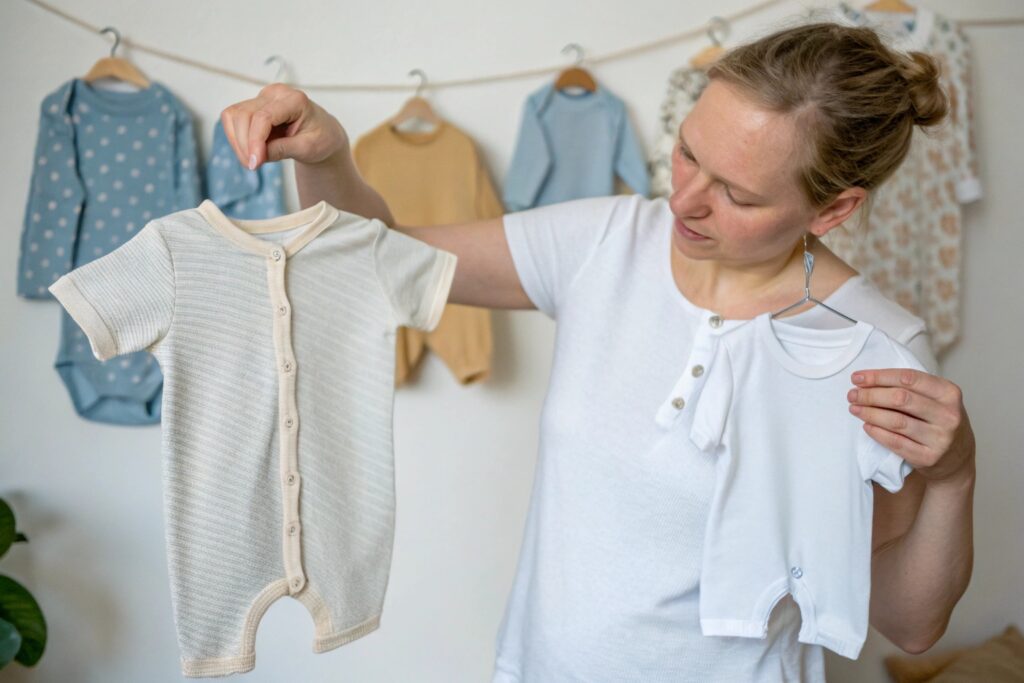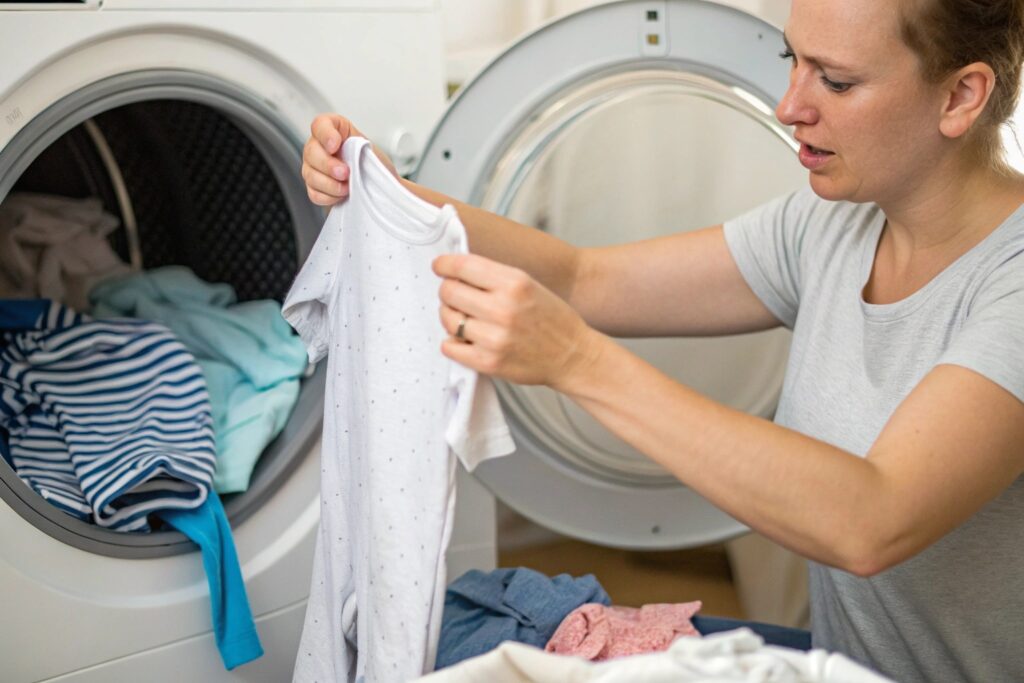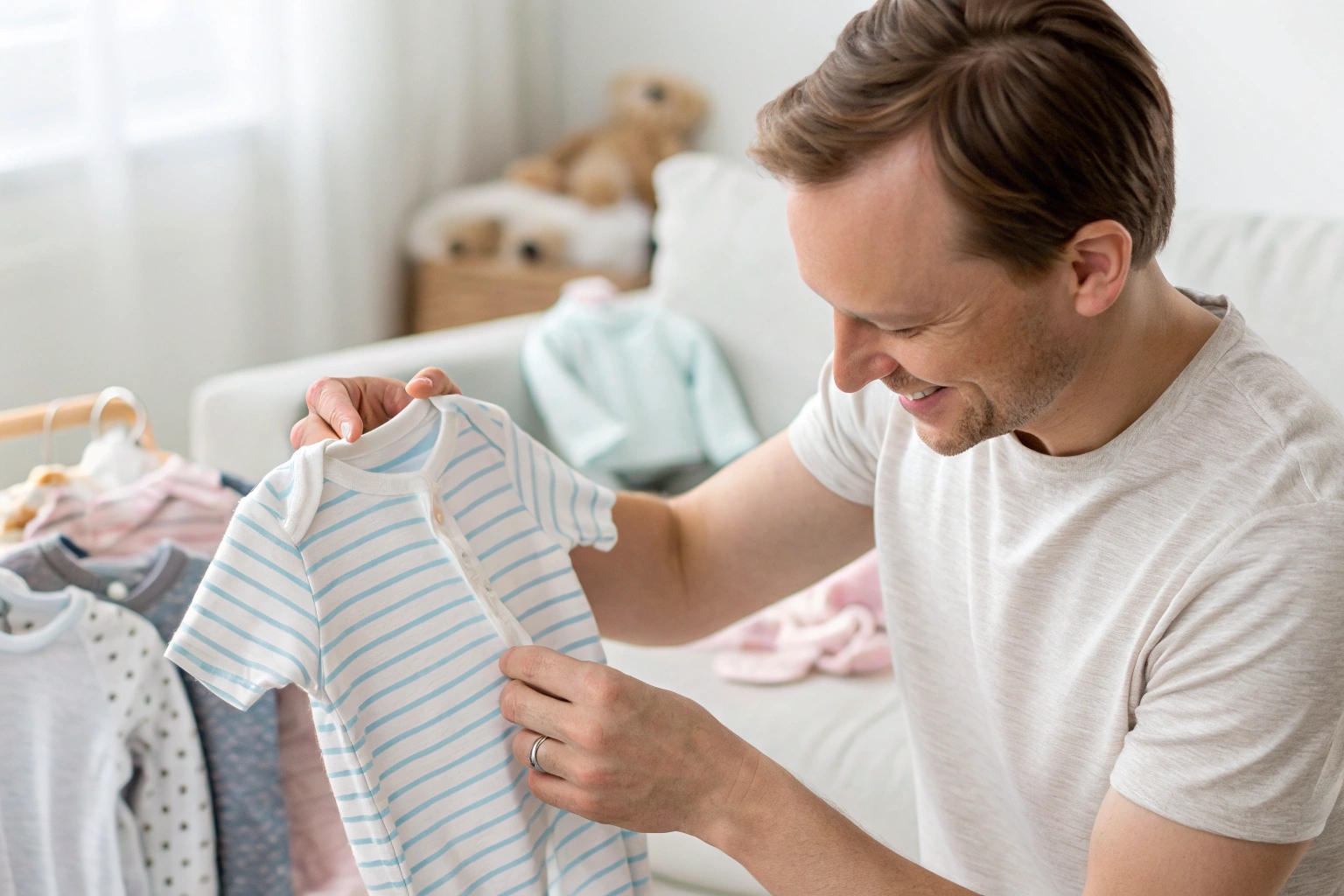When choosing clothes for babies, most parents hear one consistent message: “Go for 100% cotton.” But is it really the best option?
Yes, 100% cotton clothing is good for babies because it’s soft, breathable, hypoallergenic, and gentle on sensitive skin—making it a top choice for newborn comfort and safety.
Let’s explore why cotton is preferred, how it compares to other fabrics, and what to know before filling your baby’s wardrobe.
Why Cotton Is Recommended for Sensitive Baby Skin?
Newborns have skin that’s thinner and more delicate than adults—making it prone to irritation, rashes, and allergic reactions.
Cotton is soft, breathable, and natural—offering comfort and protection for sensitive baby skin without the risk of synthetic irritation.

What makes cotton ideal for babywear?
| Cotton Quality | Skin-Friendly Benefit |
|---|---|
| Soft texture | Reduces friction on sensitive skin |
| Breathability | Prevents overheating and sweat buildup |
| Natural fiber | No plastic-based content or harsh synthetics |
| Moisture absorption | Keeps skin dry and prevents diaper rash |
| Hypoallergenic | Less likely to trigger allergies |
That’s why most onesies, bodysuits, and newborn sets are made with 100% cotton—it’s the safest default choice, especially for first-time parents.
At Fumao, we use only OEKO-TEX® certified cotton fabrics in our infantwear to ensure comfort and chemical safety.
How 100% Cotton Compares to Blended Babywear Fabrics?
While 100% cotton is a classic choice, some babywear includes blends—like cotton with polyester or spandex—for added stretch or durability.
100% cotton is softer and safer for newborn skin, while cotton blends may offer better stretch, shape retention, and quicker drying times.

Cotton vs. common blends in babywear:
| Fabric Type | Pros | Cons |
|---|---|---|
| 100% Cotton | Soft, breathable, natural, hypoallergenic | Can wrinkle, shrink, less stretch |
| Cotton-Spandex (95/5) | Stretchy, form-fitting, better for active toddlers | May retain heat, slightly synthetic feel |
| Cotton-Polyester | More durable, less shrinkage | Lower breathability, synthetic component |
| Bamboo-Cotton Blend | Ultra-soft, eco-friendly, breathable | Higher cost, care-sensitive |
For newborns (0–6 months), we recommend 100% cotton or bamboo-cotton blends. For toddlers (12M+), cotton-spandex blends can offer easier movement for play.
What Parents Should Know About Organic vs. Regular Cotton?
Not all cotton is created equal. Even 100% cotton can be treated with chemicals or grown using pesticides. That’s where “organic cotton” becomes important.
Organic cotton is grown without toxic chemicals and processed with minimal environmental impact—making it a safer and more sustainable choice for babies.

Key differences between regular and organic cotton:
| Feature | Regular Cotton | Organic Cotton |
|---|---|---|
| Farming method | Uses pesticides and GMOs | Grown without chemicals or GMOs |
| Processing chemicals | May use bleaches, softeners | Low-impact, baby-safe dyes |
| Skin sensitivity | May cause irritation in some | Gentle for all skin types |
| Certification | Often unverified | GOTS, OEKO-TEX®, USDA Organic |
| Environmental impact | Higher water and soil strain | More eco-friendly |
We recommend parents look for babywear labeled with GOTS or OEKO-TEX® for confidence in chemical safety and environmental responsibility.
At Fumao, our babywear lines include both regular and GOTS-certified organic cotton options, depending on customer preference and market.
Pros and Cons of Using Cotton for Newborn Clothing?
Cotton is a great choice—but like any fabric, it’s not perfect. Knowing the strengths and limitations helps you use it smartly.
Cotton is soft, breathable, and safe—but it can shrink, wrinkle, and take longer to dry compared to synthetic blends.

Pros and cons of 100% cotton for babywear:
| Pros | Cons |
|---|---|
| Naturally soft and gentle | May shrink if not washed properly |
| Highly breathable and absorbent | Slower drying than polyester blends |
| Hypoallergenic for most babies | Can wrinkle more easily |
| Biodegradable and eco-friendly | Less stretchy unless blended |
| Widely available and affordable | Organic cotton is more expensive |
Best use cases:
- Yes: Bodysuits, onesies, pajamas, hats, blankets
- Maybe: Activewear for toddlers (consider cotton-spandex)
- Avoid: Swimsuits or water-friendly items (prefer synthetics)
Always wash cotton babywear in cold water and air-dry or tumble on low to reduce shrinkage and preserve softness.
Conclusion
Yes—100% cotton is one of the best fabrics for babies. It’s safe, breathable, and gentle on even the most sensitive skin. Whether you go regular or organic, choosing high-quality cotton ensures your baby stays comfortable, cool, and cozy all day long.










